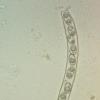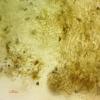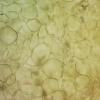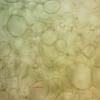
02-08-2024 10:07
 Lothar Krieglsteiner
Lothar Krieglsteiner
.. found in the French Alps, 5.7.24, 1455 m NN, tw

02-08-2024 14:30
 Lothar Krieglsteiner
Lothar Krieglsteiner
French Alps, 6.7.24. The asci and some gel around

02-08-2024 13:08
 Lothar Krieglsteiner
Lothar Krieglsteiner
.. unfortunately without a dried specimen, and unf

02-08-2024 11:22
 Lothar Krieglsteiner
Lothar Krieglsteiner
.. French Alps, 29.6.24. There is a H. rhododendri

01-08-2024 13:16
 Lothar Krieglsteiner
Lothar Krieglsteiner
.. on Alnus alnobetula, 16.7.24.When finding I fir

01-08-2024 17:34
 Lothar Krieglsteiner
Lothar Krieglsteiner
... found 21.6.24, growing on a very thin peace of

01-08-2024 12:33
 Lothar Krieglsteiner
Lothar Krieglsteiner
found 17.6.24, Italian Alps, on deciduous wood in

01-08-2024 15:43
 Lothar Krieglsteiner
Lothar Krieglsteiner
... 6.7.24, alpine situation (near Glacier), same

01-08-2024 15:00
 Lothar Krieglsteiner
Lothar Krieglsteiner
found on 26.7.2024 on Amelanchier ovalis-twig in a
 Hello, I need help with this Peziza s.l. and at the same time I must confess I probably haven't done a good job.
Hello, I need help with this Peziza s.l. and at the same time I must confess I probably haven't done a good job.It was found on probably calcareous mossy roadside soil under beech and oak, altitude 500 m.a.s.l.
1 apothecium only, 27 mm on average. I was thinking about P. saccardoana or P. depressa or some Legaliana, but the microcharacters don't match I think.
Excipulum composed of globose cells mixed with narrow and inflated hyphae, undifferentiated, but I may have made a mistake in not distinguishing the thin layer of text. intricata from the subhymenium. Latex not observed, but the apotecium was already somewhat drier. External thin pruinose layer of cells of text. prismatica.
Subhymenium – I don't know, how to described it, but look.
Asci cylindric, up to 260 µm, with amyloid reaction WT type, pleurorhynchous.
Ascospores from sporeprint in water 14.5–16.3 × 8.3–9.8 µm, Q = 1.6–1.9, N = 40, solely with 2 LBs, ornamentation from irregular warts, mostly up to 0,8 µm, rarely 1,1 µm in height, some somewhat pseudoapiculate.
Paraphyses straight, sometimes forked under the top, containing brown intracellular pigment.
It's possible, that some more of my confusions will follow in the next few days. I guess I'm 'lucky' now to only have the most uncertain or mysterious collections, but it's more likely I'm just having a period of some torpid asco-decline :-)
Many thanks for your patience ;-)
Marek

The ecology is also compatible with this species.

Thank you.
M.












